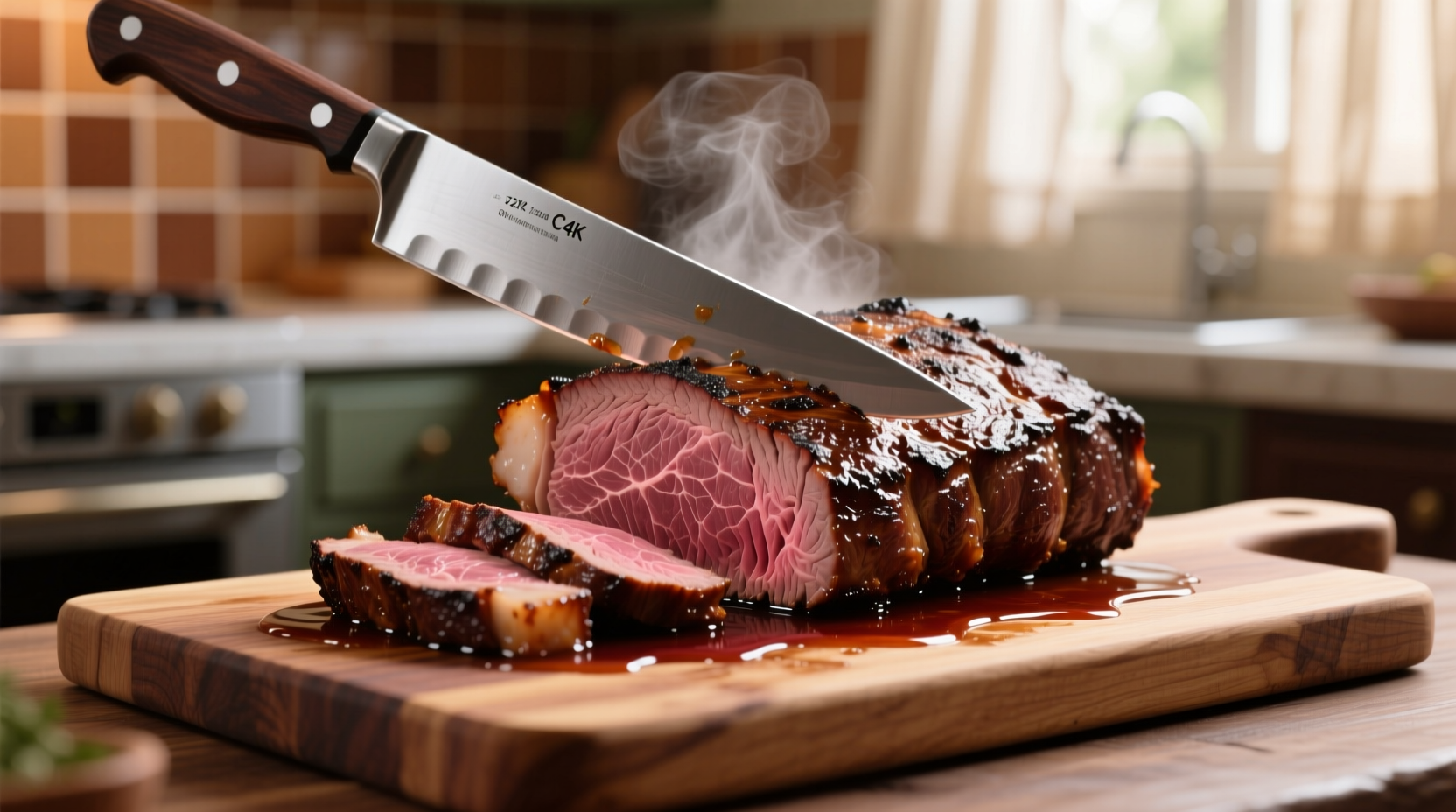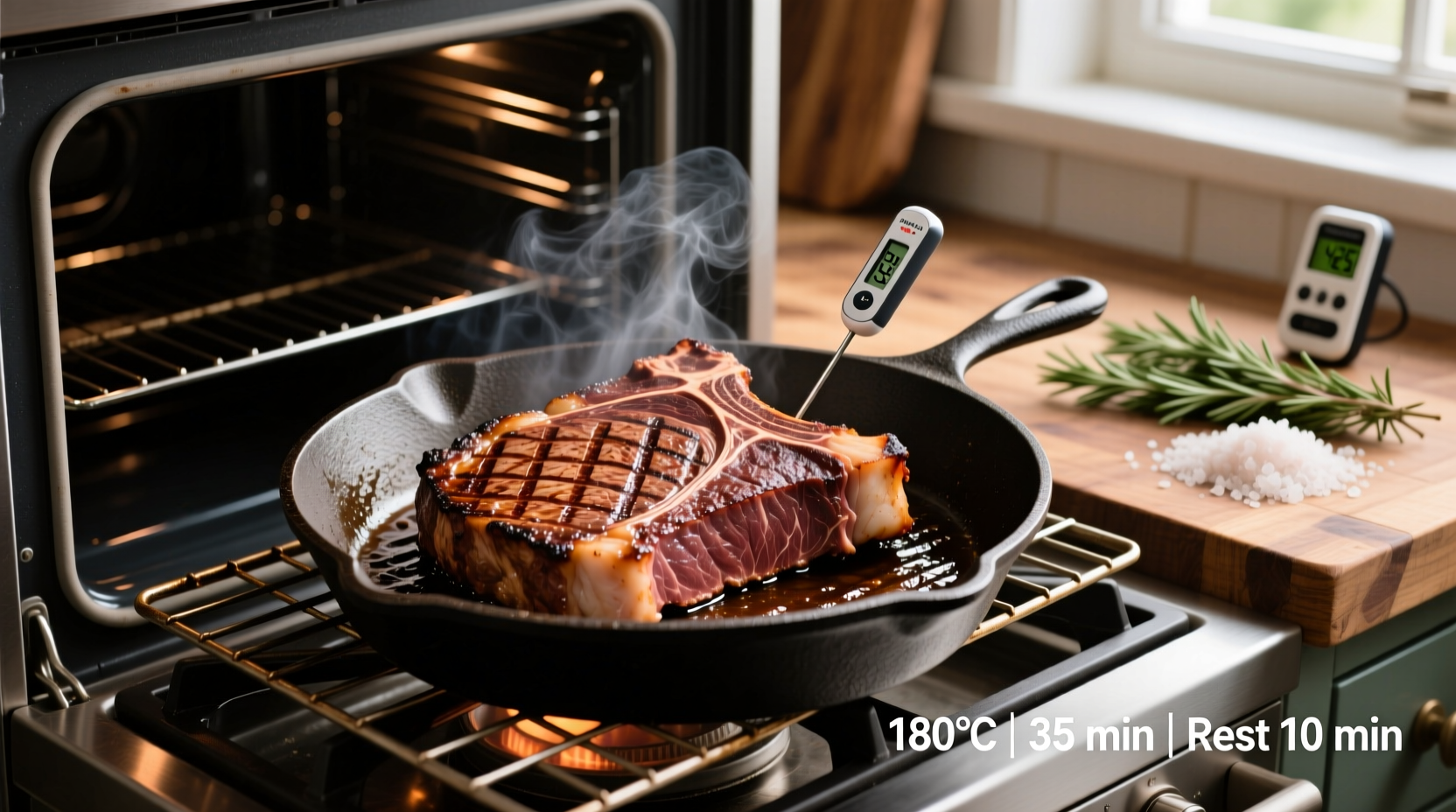Perfectly cooked oven tri-tip reaches an internal temperature of 130-135°F (medium-rare), requires 20-25 minutes per pound at 325°F, and must rest for 15 minutes before slicing against the grain for maximum tenderness.
The Ultimate Guide to Oven-Cooked Tri-Tip: Restaurant Quality at Home
Nothing impresses guests like a flawlessly cooked tri-tip roast with a flavorful crust and juicy, tender interior. This comprehensive guide delivers professional results using simple oven techniques anyone can master. You'll learn precise temperature control, seasoning secrets, and slicing methods that transform this affordable cut into a showstopper meal.
Why Tri-Tip Deserves Your Attention
Tri-tip, also known as "Newport steak" or "Santa Maria steak," comes from the bottom sirloin and offers exceptional marbling with less fat than premium cuts. Its triangular shape (hence the name) and rich beef flavor make it ideal for oven roasting when prepared correctly. Unlike expensive steaks, tri-tip delivers gourmet results at a fraction of the cost when you follow these proven techniques.
Essential Preparation Checklist
Before heating your oven, gather these critical components:
- Meat selection: Choose tri-tip with bright red color and fine marbling (1.5-3 pounds ideal for oven cooking)
- Thermometer: Instant-read digital thermometer (USDA recommends thermometer use for safety)
- Rack system: Wire rack inside roasting pan for proper air circulation
- Seasoning base: Coarse salt, black pepper, garlic powder (ratio: 1 tsp salt per pound)
| Tri-Tip Weight | Oven Temp | Cooking Time | Target Internal Temp |
|---|---|---|---|
| 1.5 lbs | 325°F | 30-38 minutes | 130-135°F |
| 2 lbs | 325°F | 40-50 minutes | 130-135°F |
| 3 lbs | 325°F | 60-75 minutes | 130-135°F |
Step-by-Step Cooking Process
1. Proper Meat Preparation (15 Minutes Before Cooking)
Remove tri-tip from refrigerator 30 minutes before cooking. Pat completely dry with paper towels - moisture prevents proper searing. Score the fat cap in a diamond pattern to prevent curling during cooking. Apply seasoning mixture evenly across all surfaces, including the edges.
2. Oven Setup & Initial Cooking
Preheat oven to 325°F with rack positioned in the center. Place tri-tip fat-side up on a wire rack inside a roasting pan. Insert oven-safe thermometer into the thickest part, avoiding fat pockets. Roast undisturbed until thermometer reads 110°F (approximately 75% of total cooking time).
3. Temperature Monitoring & Doneness
Monitor internal temperature closely during the final 15 minutes. Remove tri-tip from oven when thermometer reads 120°F for rare, 125°F for medium-rare, or 130°F for medium. Remember that temperature will rise 5-10°F during resting (carryover cooking). The USDA Food Safety and Inspection Service confirms that beef is safe to eat at 145°F with 3-minute rest time, but most chefs prefer lower temperatures for tri-tip.

Critical Resting & Slicing Techniques
Transfer cooked tri-tip to a clean cutting board and tent loosely with foil. Rest for 15 minutes minimum - this allows juices to redistribute throughout the meat. Never skip this step, as premature slicing causes significant juice loss.
Identify the grain direction by looking at the muscle fibers. Slice perpendicular to the grain in ¼-inch thick slices using a sharp carving knife. This technique shortens the muscle fibers, creating noticeably more tender bites. Professional chefs at the Culinary Institute of America emphasize this slicing method as essential for tougher cuts like tri-tip.
Troubleshooting Common Issues
Dry or Tough Results
Caused by overcooking or improper slicing. Always use a thermometer and remove meat 5-10°F below target temperature. Slicing against the grain is non-negotiable for tenderness. If your tri-tip consistently turns out dry, try brining for 4-6 hours before cooking to improve moisture retention.
Uneven Cooking
Tri-tip's irregular shape causes thinner sections to cook faster. Position the thicker end toward the oven's heat source. For convection ovens, rotate the pan 180 degrees halfway through cooking. The American Meat Science Association recommends this technique for irregularly shaped cuts.
Perfect Pairings for Your Tri-Tip
Serve with roasted vegetables like garlic-potatoes or asparagus that cook alongside the meat. A simple chimichurri sauce (parsley, garlic, vinegar, olive oil) complements the beef's richness without overpowering it. For wine pairings, choose medium-bodied reds like Pinot Noir or Zinfandel that match the meat's intensity without overwhelming tannins.
Advanced Techniques for Next-Level Results
For enhanced flavor development, try these professional methods:
- Dry brine: Salt the tri-tip 24 hours before cooking for deeper seasoning penetration
- Reverse sear: Finish with 5 minutes under the broiler for a perfect crust
- Smoke infusion: Add wood chips to a foil pouch in the oven for subtle smokiness











 浙公网安备
33010002000092号
浙公网安备
33010002000092号 浙B2-20120091-4
浙B2-20120091-4